Demand Generation is integral to any successful marketing strategy. It is also a process with many moving parts that can be difficult to manage on your own, which is why automation is so important.
But first things first. The online revolution has been a boon to the science of demand generation. With the massive societal transition from offline to online consumption, many pre-purchase customer activities that were nearly impossible to track in the physical world have become easily trackable.
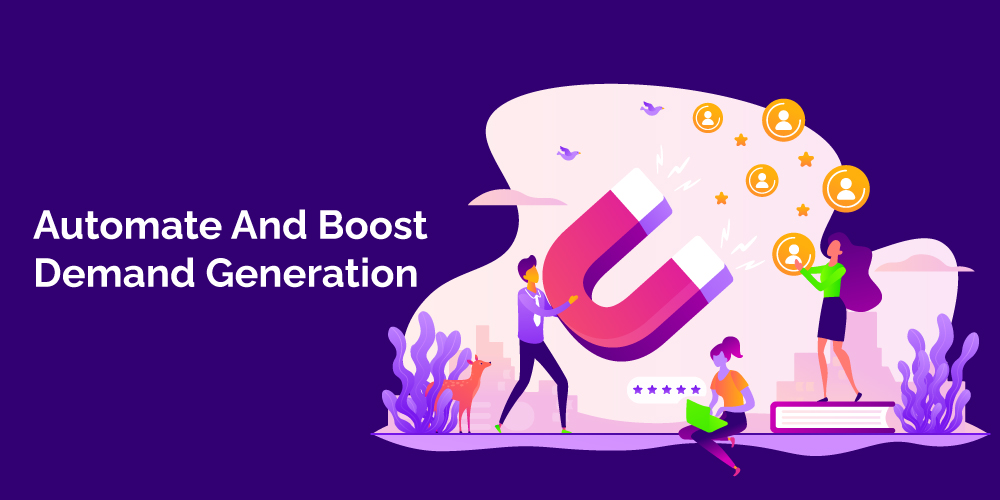
Today, very few people dare to make a purchase without first searching online for information. So, why not help people with information and at the same time, explain how your product/service fits that need. For this, all you have to do is to track the online behavior of your prospects. Figure out what they are searching for when they are at a particular stage of your marketing funnel.
Then, use this information to intelligently nurture your prospects and gently guide them down your funnel towards a purchase.
Using specialized platforms like LeadSquared, you can create an effective demand generation engine for your business that can fire on all cylinders.
This post will show you the 5 easy steps you need to follow to automate demand generation for your business and convert more leads into customers with a lot less effort.
Step 1: Lead Capture
Before you start up your demand generation engine, you need to turn anonymous website visitors into known identities to approach them later.
Lead capture is the process of collecting information about your site visitors and storing it in a contact database.
The goal is to gather prospects’ data such as contact information (email and phone number). It will help you track their online behavior (Step 2), nurture it (Step 3), score it (Step 4), and reach out to them and influence them to purchase your product/service (Step 5).
Now, to obtain someone’s contact information, you’ll need to provide an enticement, something your visitor values highly and that has no cost associated with it. This enticement is also known as a lead magnet.
A lead magnet is usually a digital product, such as an eBook, a white paper, an online course, and a webinar. You have to make sure that your lead magnet directly addresses your visitor’s needs and helps solve their problems. Also, structure your lead magnet to be a gateway into your paid products and services.
Here are some examples:
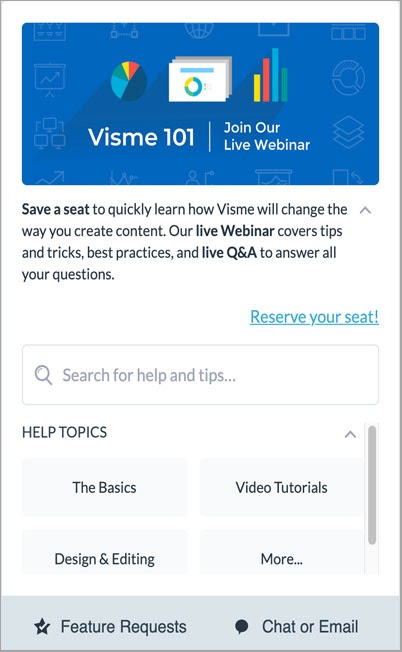
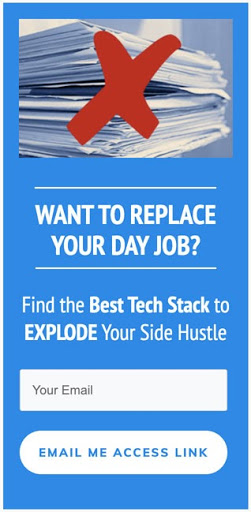
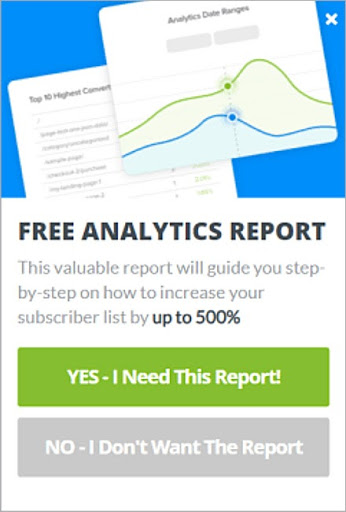
Step 2: Lead Tracking
Once you’ve captured your visitors’ contact information, you can track their online behavior through cookies and record them in a CRM software.
From that point on, you can find out instantly whenever they visit any pages on your site, from specific blog posts to product information pages and/or pricing pages.
Here’s a word of caution, though. The more information you request to release your free lead magnet, the smaller your pool of prospects will become. In other words, people don’t like to disclose too much personal information online. So, the more you ask, the more friction you’ll create.
Your goal with lead tracking is to have the minimum amount of information necessary to:
- let them enable cookies
- automate your nurturing process.
Asking for their first name would be practical for personalizing your communications. But you’ll soon find that some people will buck at that, and you may lose many potential leads.
Also, asking for a phone number, which might be helpful for your sales staff later on, is not required at the lead tracking stage. It is because most people are uncomfortable sharing this type of information. In short, the least personal information you ask for, the higher the number of leads you’ll be able to capture.
Finally, most lead tracking platforms will give you the ability to verify that the supplied email address is legitimate by asking leads to verify their address to receive your lead magnet.
At a minimum, never give direct access to your lead magnet through a link on your website. Just email the link to your visitors. There is another reason for doing this. If the email bounces, you can remove that email from your subscription list.
Step 3: Lead Nurturing
Armed with the ability to track your visitors’ every online move, you can now create nurturing sequences using automated workflows.
Your CRM platform will let you set up a workflow to send nurturing email sequences to your subscribers based on the pages they visit on your website.
For example, if you offer home staging services and a visitor lands on your service description page, you can start them up on a weekly email drip campaign where you can send them a valuable staging tip every week.
Let’s say, at some point in the email sequence, a visitor clicks on your temporary-storage page. Here, you can switch them to a new drip sequence. This new drip will comprise emails with information on what to send into storage during the staging phase. You can trigger actions in real-time based on their activities. It will help you actively nurture each lead.
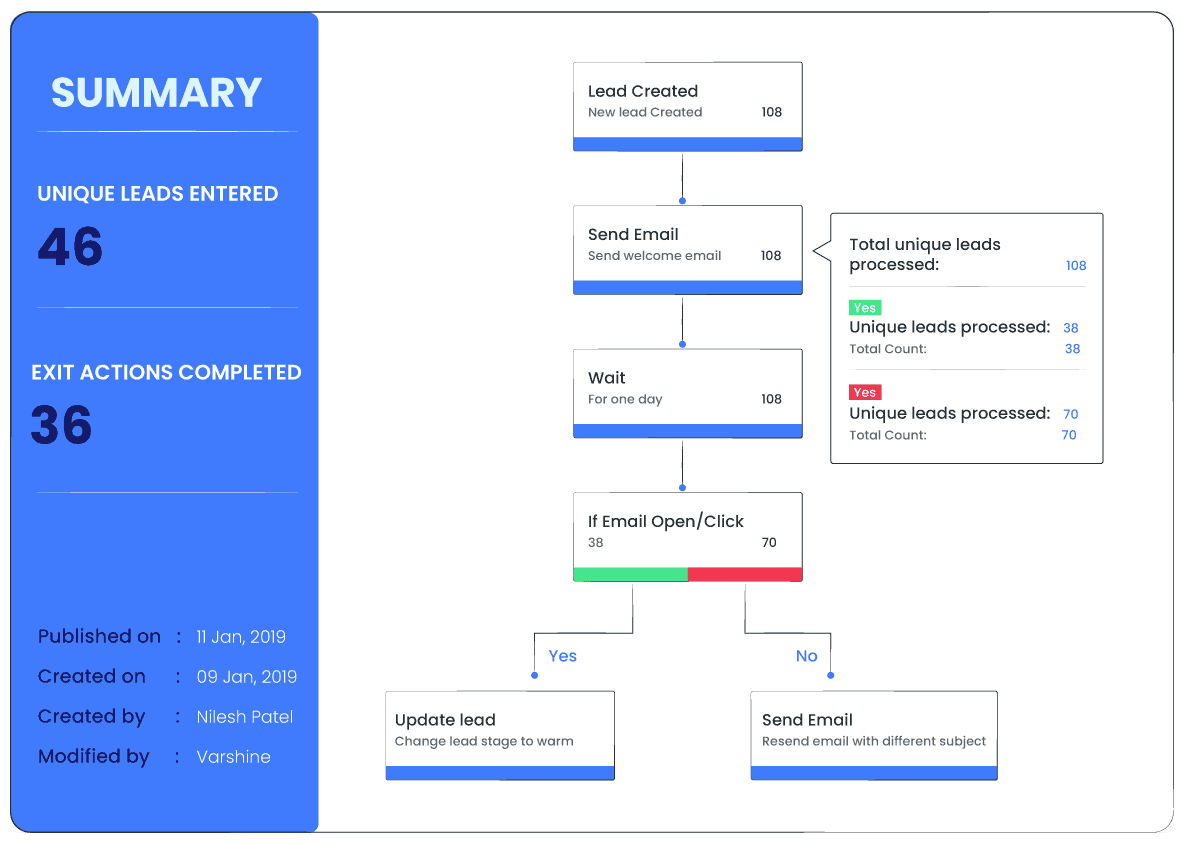
Step 4: Lead Scoring
At this stage, you turn every signal triggered by your visitors’ online behavior into a score.
For example, if a visitor downloads an eBook, you assign them 10 points. Then, every time they open an email, you add 1 point to their lead score. And every time they click a link in one of your emails, you add 2 points. If they visit a product description page on your website, you add 3 points to their score. If they browse your pricing page, you add 5 points, and so on.
This scoring process helps you identify where your visitor fits in your marketing funnel. Once your nurtured lead achieves a significant score, say 50 points, you can then have your demand generation platform (or CRM) automatically fire a signal to your sales staff so they can contact them directly.
One of the most popular signals is an internal notification email to a sales rep. It helps them look up the prospect in your CRM tool and take action, which also leads us to the 5th and final step.
Step 5: Lead Conversion
A turn-key demand generation platform like LeadSquared ensures that every online behavior is captured in your CRM tool. It helps sales reps with all the necessary information (customer details, product requirement, buying intent, etc.) to make their outreach successful. For example, this information may include the names of a specific page or blog posts on your website the prospect has visited as well as the lead score that triggered the “heads up” notification.
All this information helps your reps get deep insights into your prospect’s mindset in a way that would have been impossible to do in the offline world.
Thus, when your sales reps engage with a prospect, they can address their pain points better.
Also, if you want to sell more in less time? Watch this video with automation hacks:
Wrapping Things Up
Now that you know the steps required to automate your demand generation process to scale your lead conversions, it’s time to put rubber to the road and test drive a demand generation platform for your business.
The advantage of using Leadsquared is that it lets you implement all the above steps from within a single platform. So you don’t have to cobble together a bunch of third-party tools.
So, why not create a free account and give it a try?









